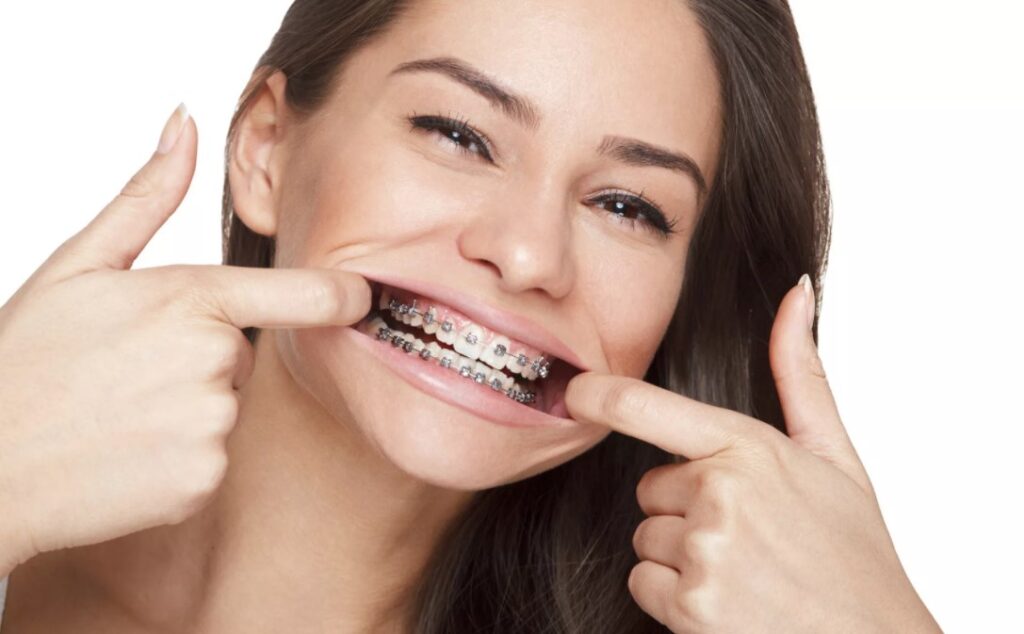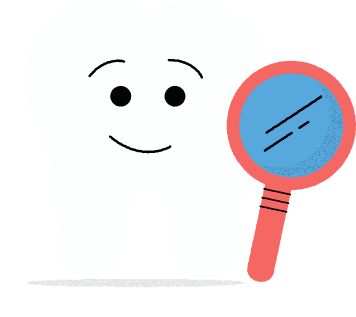Periodontal or gum disease results from bacterial plaque and your own body’s response to the plaque.
When you’re undergoing orthodontic treatment, it’s important that you keep your teeth and gums healthy. Having a clean and healthy mouth helps avoid tooth decay and staining, and you’re also less likely to develop periodontal or gum disease.
In this article, we explain what periodontal disease is and how you can prevent it from developing.
What is periodontal disease?
Simply put, periodontal disease is gum disease that reduces the bone and gum support for your teeth. There are four stages of the disease, ranging from mild inflammation in the gums (gingivitis) to advanced periodontal disease – a serious condition mostly seen in adults that compromises the bone and connective tissue around the teeth, causing tooth mobility and eventually tooth loss.
What causes periodontal disease?
Periodontal or gum disease results from bacterial plaque and your own body’s response to the plaque. It is often seen as gum tissue that becomes swollen and red and bleeds easily.
The main problem with gum disease is that the early stages such as gingivitis do not result in pain. This means that many patients with gum problems probably don’t even know that there is a problem! Therefore, the gum disease can progress to a more severe periodontal disease without the patient even realising. Bleeding gums are usually a reliable warning sign that your gums are not as healthy as they should be.
What are the symptoms of periodontal disease?
There are many symptoms of periodontal disease that you should keep an eye out for. If you have one or more of these symptoms, it’s a good idea to bring it up to your orthodontist – they can provide advice on how best to treat it.
- You consistently have bad breath or a bad taste that won’t go away
- Your gums are red or swollen
- Your gums feel tender or bleed
- Your teeth and gums hurt when you chew food
- Your teeth feel loose
- Your teeth feel sensitive when you have hot or cold food or drinks
- Your gums have receded
- There’s a change in how your teeth fit together when you bite
As with most dental health problems, prevention is the best strategy! Diligent and effective oral hygiene at home, regular check-ups and professional cleaning with your general dentist can help prevent serious gum disease. If you are considering orthodontic treatment, rest assured that your specialist orthodontist understands how important good oral hygiene prior to commencing orthodontic treatment.
If you have pre-existing gum disease, your orthodontist may work alongside a periodontist (i.e., a gum specialist) to ensure that you receive the best and safest treatment.

Braces and periodontal disease
Can you get braces with periodontal disease?
That depends on the severity of your gum disease. Before undergoing braces treatment, your orthodontist may refer you to a specialist periodontist for ‘periodontal clearance’ – an exam to ensure your gums, teeth and surrounding bones are healthy enough for safe treatment with braces. Keep in mind, underlying inflammation and infection in the gums won’t just make your braces treatment less effective. Periodontal disease can result in loose teeth, compromise your bite and significantly reduce the overall longevity of your teeth.
Both children and adults can experience mild gingivitis, often seen as swollen and bleeding gums (especially when brushing or flossing). Although it may still be possible to receive braces treatment, your orthodontist will always recommend that you treat the condition first by improving your daily dental hygiene at home and booking in for a professional clean with your general dentist. Good cleaning reduces the amount of bacterial plaque (which is the true cause of most gum problems)!
As periodontal disease advances, however, the underlying infection can causes more severe symptoms such as receding gums and tooth mobility due to bone loss around the teeth – which may make standard orthodontic treatment very challenging or unsafe. Treatment and stabilising the periodontal disease are essential prior to commencing any type of orthodontic treatment. In this case, your periodontist and orthodontist will work as a team to devise the best treatment plan for your individual circumstances. Once appropriately treated and stabilised, many patients with periodontal disease can undergo carefully managed orthodontic treatment, with additional monitoring by a periodontist.
Can braces cause periodontal disease?
Braces wearers may be more likely to suffer from gum inflammation. In most cases, puffy swollen gums with braces indicate a mild case of gingivitis – a condition that’s highly treatable. To prevent inflammation of the gums from turning into a more serious problem, it’s important to brush regularly (three times a day at a minimum!) and floss at least once a day. Effective daily home care is the most important, however, it’s also crucial to book in for regular professional cleans with your general dentist. Together, these actions should prevent swollen gums from turning into more advanced periodontal disease.

How do braces affect gum recession?
In general, receding gums can’t be cured or reversed, and braces treatment won’t help. In fact, braces may exacerbate the problem by increasing the likelihood of plaque build-up and inflammation – which can cause your gum tissue to slowly pull away from your teeth.
But while you can’t reverse gum recession, you can certainly manage it. Make sure you’re brushing regularly yet gently with a soft-bristled toothbrush (hard bristles and over-brushing are a leading cause of gum recession), floss at least once a day, and book in for regular professional tooth cleaning.
Clear aligners and periodontal disease
Can you clear aligners fix receding gums?
Like braces, clear aligners (e.g. Invisalign®, Spark® and 3M Clarity®) can’t fix receding gums. And if the aligners don’t fit correctly or you don’t keep your aligner clean, then you may be prone to more gum problems.
However, because you take the aligners out to eat and drink, patients undergoing clear aligner treatment may be less likely to suffer from gum disease, provided that their overall oral hygiene is excellent.
Can you get clear aligners with receding gums?
It all depends on how severe the gum disease is. If your orthodontist thinks you would benefit from a gum specialist to look at them prior to clear aligner treatment, they will refer you to a periodontist that they trust.
Prevent periodontal disease like a pro
Patients who are at risk of or who have pre-existing periodontal disease require extra care and attention. A diligent approach to dental hygiene, combined with professional advice from your orthodontist and periodontist will help ensure that you receive both safe and effective treatment.
If you need some support to get started, then book a consult with an expert specialist orthodontist using our simple Finder Tool and get on the path to a straight and stunning smile.











